|
Great Moments: Baseball
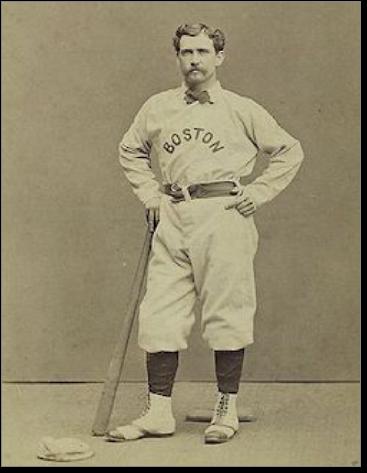
Not Exactly Farmboys
During the 1860s, baseball clubs formed throughout New Jersey with a more or less consistent pattern: The bigger the town or city, the better the play. The farming village of Irvington was an outlier in this regard. Located to the west of manufacturing powerhouse Newark, Irvington had a high percent of Irish, Dutch and German immigrants. The town formed a junior baseball club in 1860 and by the end of the Civil War the players were all grown up and playing a very competitive and, at times, “ungentlemanly” game. In 1865, the club disbanded briefly, with its best players joining other top teams in the region, but in 1866 the Irvingtons reconstituted and brought along of some of their new acquaintances—including Newark pitcher Rynie Wolters, a professional cricket bowler who had begun focusing his skills on baseball. In the spring of 1866, baseball emissaries from Irvington traveled to Brooklyn to invite the famous Atlantics—national champions in 1864 and 1865—to New Jersey to demonstrate how a top team plays the game.
It was a set-up.
The Atlantics, minus some of their top players, traveled by ferry and train to the wilds of Essex County on June 14th. This was not unheard of. The top baseball clubs often traveled to play country teams in order to spread the gospel of baseball. It was a good chance to practice and possibly find a diamond in the rough that could be recruited down the road. The Atlantics encountered a lineup that included two of the state’s top hitters, Charlie Sweasy and Andy Leonard (above), plus Bill Lewis and the Campbell brothers, Hugh and Mike, along with Wolters (left), who spooked hitters with his 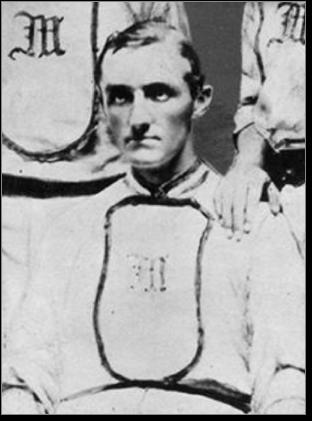 haunting, sunken eyes and twisting deliveries, on the mound. After four innings, the two clubs were tied, 9–9. This was the point at which the talent and experience of the Brooklyn players should have kicked in. And it did. The Atlantics score six times in the fifth to seize control of the game. haunting, sunken eyes and twisting deliveries, on the mound. After four innings, the two clubs were tied, 9–9. This was the point at which the talent and experience of the Brooklyn players should have kicked in. And it did. The Atlantics score six times in the fifth to seize control of the game.
But these were no country bumpkins. The Irvingtons pulled Wolters and inserted a pitcher named Bailey, who was adept and changing the speed of his deliveries, and the Atlantics managed just two more runs the rest of the way. Irvington played tight defense, hit the ball hard and won easily, 23–17. The word “upset” as a sports term would not come into use for another decade, but make no mistake: This was baseball’s biggest upset. The New York Clipper commented, somewhat sheepishly, “If there is anything “‘country’ about this little crowd, we have yet to see it.”
The Irvingtons went on to defeat another Brooklyn powerhouse that summer, the Eckfords (national champions in 1862 and 1863) and nearly beat the Atlantics in a rematch, losing in extra innings. Along with the Eureka Club of Newark, the Irvingtons‚ whose 1867 lineup featured baseball’s first Jewish superstar, Lipman Pike—gave New Jersey a brief moment as a hotbed of baseball talent to rival any state. In 1868, the governing body of baseball legalized professionalism and the Garden State’s top players (many of whom were being paid under the table) began to disperse to clubs in more lucrative markets. Not surprisingly, the players who took the field for Irvington on that June day in 1866 would continue to make headlines for years to come.
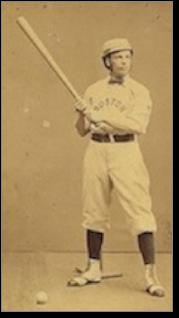 The Wright Brothers Take Flight... The Wright Brothers Take Flight...
In 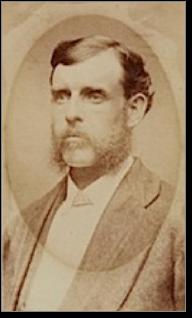 Hoboken? Hoboken?
The year 1857 was a big one for baseball. Because many of today’s rules were established before that season, it is when the clock unofficially starts on the “modern” version of the game. It was also the summer when the sports exploded in New York, New Jersey and Brooklyn, with over 100 senior and junior ball clubs—surpassing cricket as the team sport of choice in the region. But cricket didn’t go quietly. The St. George Dragonslayers were one of the premiere cricket clubs in the nation and their superstar pro was 22-year-old Harry Wright (left), who was following in his father’s footsteps. In the summer of 1857, while teaching his brother George (right) , age 8, at the Elysian Fields in Hoboken, the Wright brothers became transfixed by a game of baseball being played nearby by a group of young men their age. Long story short, Harry began honing his baseball skills and took the field for the Knickerbocker Club in 1858. George, meanwhile, grew into the finest all-around player in the game by the time he turned 20. Both starred for the Cincinnati Red Stockings, assembled by Harry in 1869—history's first acknowledged all-professional baseball team.
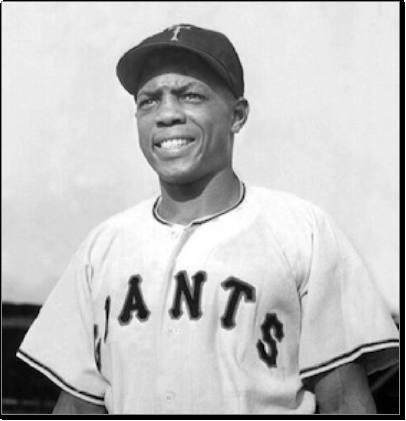 UM…THAT’S WHAT THE GLOVE IS FOR UM…THAT’S WHAT THE GLOVE IS FOR
In the spring of 1950, the New York Giants signed a lightning-quick teenager from Alabama and ordered him to report to their Class-B farm team in Trenton. On June 27th, less than a week after Willie Mays joined the Trenton Giants, he made the first of many great catches in his career.
The Giants were hosting a night game against the York White Roses with Mays batting sixth and playing centerfield. York’s Bill Biddle hit a shot to dead center and Mays turned and ran full-tilt for the fence. As he hit the warning track he turned his head to find the ball and realized that it might clear the fence. Mays elevated and raised his left arm but as he did he sensed the ball was past his glove. He instinctively stretch out his right arm and snagged Biddle’s would-be homer bare-handed just as it was about to leave the park, slammed into the fence, and then landed on his feet.
The Giants lost the game 2–0 and the play wasn’t even mentioned in the papers the next day. Mays’s teammate, catcher Len Matte, remembered the play the rest of his life.
“Everybody, including us, didn’t know what to say,” Matte recalled. “It’s like…this guy dropped out of the sky from somewhere.”
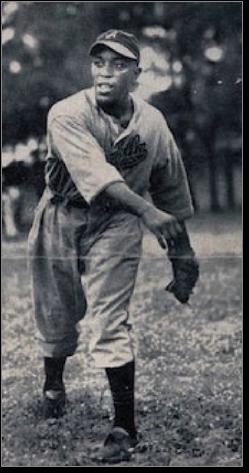 DAY TO REMEMBER DAY TO REMEMBER
Common baseball lore holds that Bob Feller is the only big-league pitcher to hurl a no-hitter on Opening Day. Strictly speaking, this is true; “Rapid Robert” no-hit the Chicago White Sox on April 16, 1940. However, six years later, on May 5, 1946, another Hall of Famer, Leon Day, duplicated this feat for the Newark Eagles in the team’s season opener against the Philadelphia Stars.
Prior to World War II, Day had earned wide recognition as one of baseball’s greatest pitchers, black or white—and one of the game’s best all-around players. He was a nine-year veteran of the Negro League before being drafted in 1943. Day served in an amphibious supply unit and was on Utah Beach during the D-Day invasion of June 6, 1944. Less than three months after his discharge in 1946, he was back on the mound for the Eagles.
Newark’s Ruppert Stadium was abuzz for the Sunday opener. Day fanned six and allowed just three Philadelphia hitters to reach base—two on walks and a third in a fielding error—in an exciting 2–0 victory. He injured his arm on a fielding play that preserved the no-no, which contributed to the sore arm he developed over the course of the season. Yet he still managed to lead the Negro National League in wins and strikeouts, and batted a lusty .469.
With Jackie Robinson having broken baseball’s color line that year, major-league scouts filled the stands for his appearance in the 1946 Negro League World Series. Unfortunately, Day pitched poorly and, at age 30, fell of the big-league radar. He did play minor-league ball in the early 1950s, but was well past his prime by then.
Day returned to Newark after his playing days, working for many years as a bartender. He eventually moved to Baltimore, where he had grown up, working as a security guard in the 1960s and 70s. In 1995, Day was voted into the Hall of Fame. He learned of the news a week before his death at age 78.
|
|
|